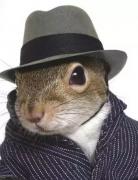One thing that many new people get confused on when discussing tunnel vision, they sometimes believe that they will just go into it during the incident and stay there. With practice of not just fixating on one object it just doesn't happen that way. The only time I had it is when I brought the front sight onto target, looked at a particular object, etc and fixated on it. After the subject was shot and fell, parachute opened, 50# rock dropped, sailor on fire was tackled and put out I no longer had tunnel vision. I just continued to look and think of, "What's next". So the tunnel vision should be occurring for a small and specific amount of time. So when in a knock down drag out fight I had no tunnel vision, etc.




 Reply With Quote
Reply With Quote


